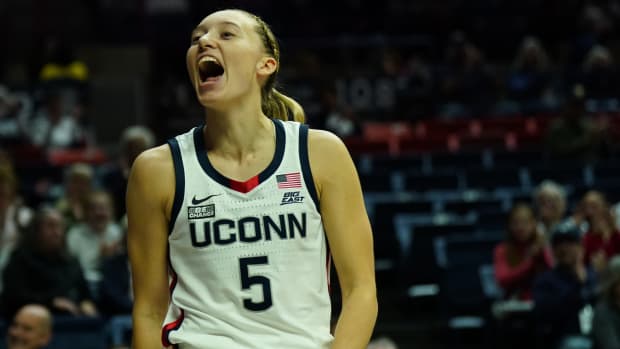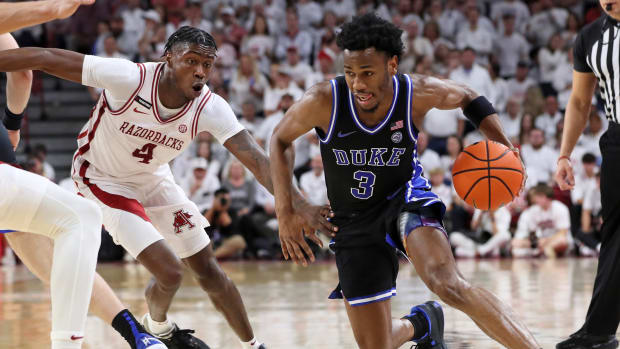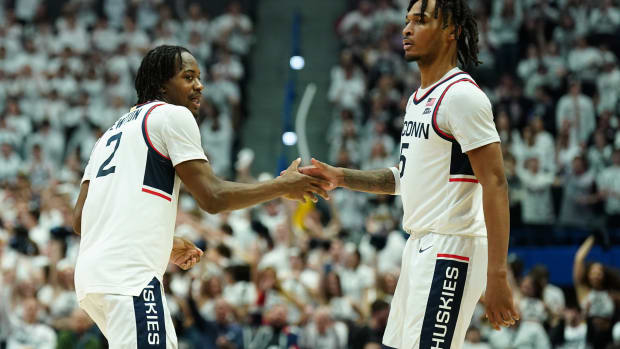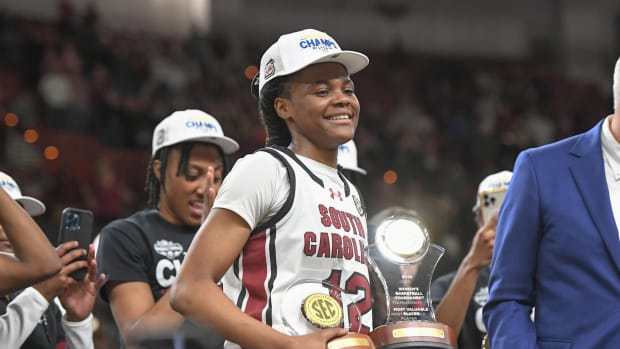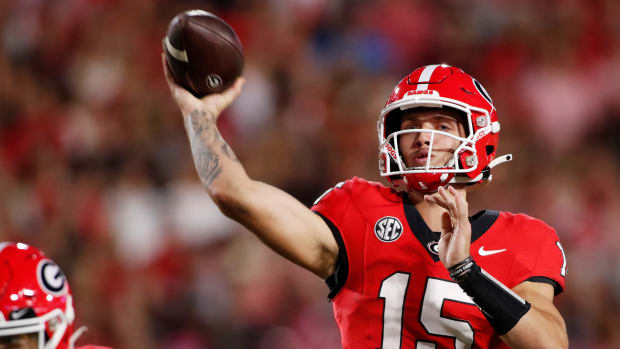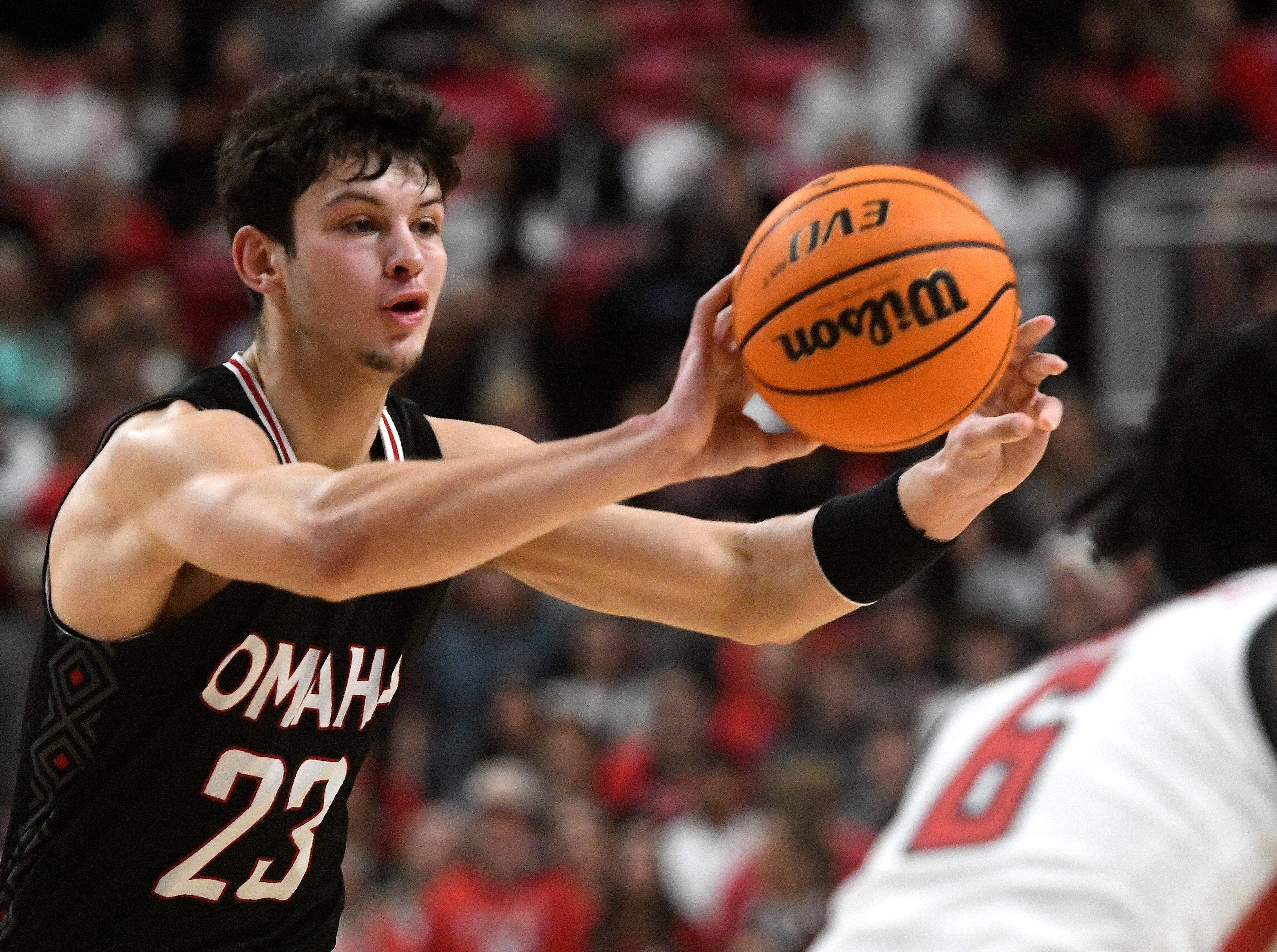
Ten Percent of DI Men's Basketball Players Already Entered Transfer Portal
This Monday, following the conclusion of the regular season, the transfer portal opened for Division-I basketball players. As of Tuesday night, 555 D-I men's collegiate basketball players had already entered the portal, a figure that is slightly larger than 10% of total players in the league.
In other words, within 48 hours of the portal opening, more than one in every ten players has opted to search for a new program for the upcoming season. It is important to note that over the next few weeks this number is expected to rise substantially, as more players mull over their plans for the future and as the 100-plus teams competing in post season tournaments gradually get eliminated: a continually updated database of current players can be accessed here.
The staggering number of early portal entrants indicates a shift in the college landscape and many have pointed to NIL being the main cause of disruption. However, without looking at who is entering the portal, it is rash to make such an assumption. The NIL Collective system offers 'pay-for-play' contracts to athletes and has run rampant through men's revenue sports. This talent based NIL economy has created a proxy free agency at the end of every season where teams bid for top talent using promises of NIL deals. However, not all players can reasonably command this payment, as it is reserved for impact players. Looking at the composition of players in the portal can help to allocate the correct amount of responsibility NIL has in the high transfer portal entry rates.
A myriad of factors go in to players decisions to search for a new program including, but not limited to; coaching changes, lack of playing time, poor culture fit, NIL potential, homesickness, change in role on the team, etc. Bart Torvik, a staple of collegiate basketball metrics for both players and teams has 467 transfers currently listed. By turning to the on-court data of the players who are searching for a new team, it may help shed light on why players are entering the portal.
Bart Torvik's advanced metric PORPAGATU! (PRPG!) serves as an indication of offensive player efficiency. While PRPG! does not paint the full picture of a players two-way value, it serves as a solid proxy for identifying the desirability of the player in the transfer market. Currently, Frankie Fowler from the University of Nebraska Omaha is the highest rated player in the portal with a 4.9 PRPG!; out of all D-I players this rating places him at twenty-sixth. However, players like Fowler are far from the norm in the portal.
To be a top 100 player this season, one must have achieved a PRPG! rating of at least 4.1; only four players (Frankie Fidler, Mikeal Brown-Jones, Jalen Leach, and Darlinstone Dubar) hit this landmark rating. This is less than one percent of the players in the portal according to the Bart Torvik database. A PRPG! of 3.0 or higher is necessary to be within the top 400 players in college basketball, and while this might not make a player a priority target for a team with tournament aspirations, these players can provide valuable depth at the highest level and are serious contenders for impact at less prominent schools. According to the database, eighteen players (3.9% of transfers) fall into this second category.
Below this level of player, there still remains distinct strata of talent. I have continued to group players based on where they fall in regards to on-court performance from the given season:
PRPG 4.1+ (Top 100 Ranked College Player): 4 (0.9%)
PRPG! 3.0-3.9 (100-400 Ranked College Player): 18 (3.9%)
PRPG! 1.8-2.9 (400-1000 Ranked College Player): 65 (13.9%)
PRPG! 0.2-1.7 (1000-2000 Ranked College Players): 210 (45%)
PRPG! < 0.2 (2001+ Ranked College Player): 170 (36.4%)
It is clear to see that the amount of true impact players in the portal fall below 5% of total entrants. For the roughly 80% of players in the portal who are not in the top 1000 of current college basketball players in PRPG! it seems unlikely that the reason of exit is NIL considerations. Even for many between 400-1000 in PRPG!, the leverage they have to cash in on a NIL windfall is slim. For those in the top 5% of players, they are likely able to leverage their performance into a NIL payday, however, it is important to note that within those 22 ranked in the top 400, only four play for High Major conferences. While NIL may be a factor, some could be looking to take their game to a program with more resources for player development and a chance to make a postseason run.
One of the most important factors in the development of college basketball players is on-court minutes. While many may try to convince you that money rules all, I can assure you that playing time still very much matters, even in the era of NIL. To break down the portal through the lense of playing time I grouped players into four categories; benchwarmers (below 20% of total minutes), deep bench players (20.1%-40% of total minutes), second unit (40.1-65% of total minutes), and first unit (over 65.1% of total minutes)
Out of the 467 players currently in the Bart Torvik Database:
Benchwarmers: 165 (35.3%)
Bench Players: 80 (17.1%)
Second Unit: 124 (26.3%)
First Unit: 98 players (21%)
It is clear that the for the majority of players in the portal more is to be desired when it comes to playing time at their current programs. With 79% of these players not receiving starter minutes, looking for a program where they can be on the floor is important. For over half of the player who receive less than 20% of their teams total minutes this season, finding a school where they can at least contribute as a role player is likely of more importance than the negligible difference in NIL checks they are able to cash.
In terms of conferences, 52 players (11.1%) come from high major institutions,and the remaining 415 (88.9%) from the mid-major ranks. Of high major players, 64.5% played either benchwarmer or deep bench minutes. For well over half of those entering the portal from high major schools, there is an indication that finding a landing spot where they can see the court is of priority.
For the lion share of portal entrants hailing from mid-major institutions the minute splits look different. Approximately half of player played over 40% of minutes. For roughly half of mid-major players, a desire to find more playing time once again seems to be a driving force in their decision to hit the portal.
While NIL is likely a main factor in the decision for the most elite players to test the waters in the transfer portal, for the vast majority of the players in the portal concerns of development, playing time, and other cultural factors play a heavier hand. While NIL has changed the game at many top programs by allowing schools to surge by poaching players, the shocking number of athletes in the portal is not indicative of a more valuable transfer market than previous years. With many top teams heading home in the coming week this sentiment may change depending on the decision of many big name players. Until then, the portal is still par for the course.
